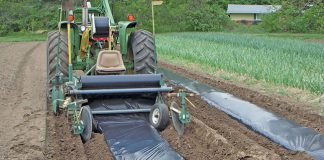Between 2011 and 2013, for example, farmers in Kenya increased the area planted to such greens by 25%. It seems ‘indigenous’ vegetables such as amadumbe (Colocasia esculenta), morogo or mfino (Amaranthus cruentus) and yam (Dioscorea spp) are full of goodness, making them potent weapons against dietary deficiencies. They also have built-in qualities such as drought and pest tolerance.
Studies
With malnutrition rampant in many parts of Africa, I cannot help but wonder why these veggies have not been used by those in need before now. Or is the problem more complex than that? Scientists are now stepping up their studies of indigenous vegetables to better understand their health benefits and improve them.
But, as described in the article, there is a risk here: researchers could inadvertently breed one or more of the desirable characteristics out in pursuit of faster-growing crops, for example. Their intentions are good as they aim to make these vegetables more attractive to both farmers and consumers, but errors have been made before. This aside, I shall not be surprised to see indigenous vegetables steadily moving from the niche they currently occupy to become part of the mainstream vegetables we consume daily.
Exploiting the growing market
There must be opportunities for farmers throughout Africa to tap into this potentially lucrative market. If the Kenyan farmers mentioned are anything to go by, then go-ahead farmers in other countries are already exploiting these possibilities. Are their South African colleagues doing anything about it?
Supermarkets don’t miss a trick when it comes to attracting customers so they’ll follow this trend with great enthusiasm, I’m sure. It’s good news for the fresh produce sector when new varieties arrive on the market. It’s even better when old varieties come back into vogue!












